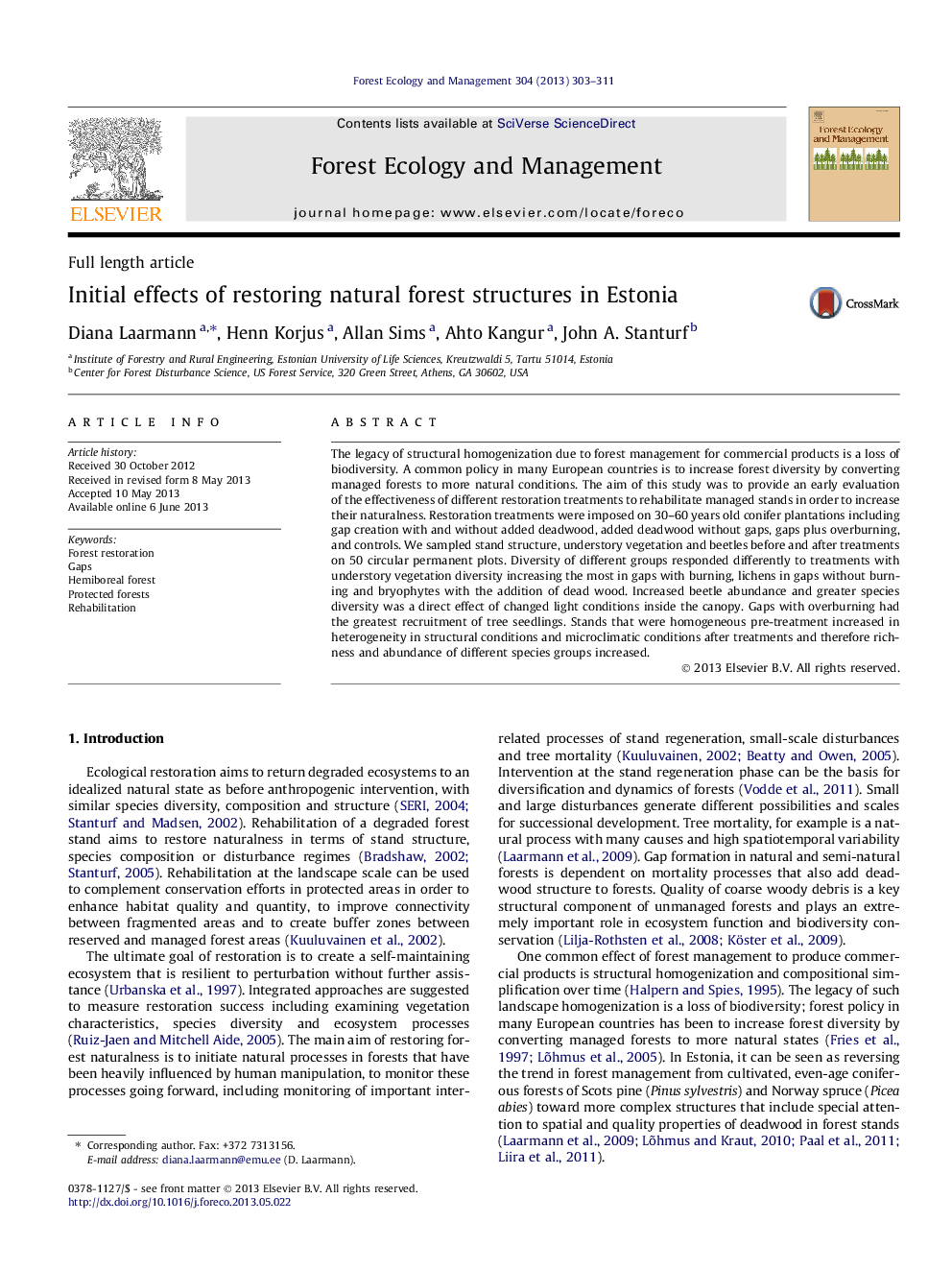| Article ID | Journal | Published Year | Pages | File Type |
|---|---|---|---|---|
| 6544288 | Forest Ecology and Management | 2013 | 9 Pages |
Abstract
The legacy of structural homogenization due to forest management for commercial products is a loss of biodiversity. A common policy in many European countries is to increase forest diversity by converting managed forests to more natural conditions. The aim of this study was to provide an early evaluation of the effectiveness of different restoration treatments to rehabilitate managed stands in order to increase their naturalness. Restoration treatments were imposed on 30-60Â years old conifer plantations including gap creation with and without added deadwood, added deadwood without gaps, gaps plus overburning, and controls. We sampled stand structure, understory vegetation and beetles before and after treatments on 50 circular permanent plots. Diversity of different groups responded differently to treatments with understory vegetation diversity increasing the most in gaps with burning, lichens in gaps without burning and bryophytes with the addition of dead wood. Increased beetle abundance and greater species diversity was a direct effect of changed light conditions inside the canopy. Gaps with overburning had the greatest recruitment of tree seedlings. Stands that were homogeneous pre-treatment increased in heterogeneity in structural conditions and microclimatic conditions after treatments and therefore richness and abundance of different species groups increased.
Related Topics
Life Sciences
Agricultural and Biological Sciences
Ecology, Evolution, Behavior and Systematics
Authors
Diana Laarmann, Henn Korjus, Allan Sims, Ahto Kangur, John A. Stanturf,
